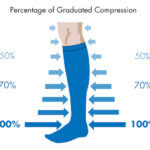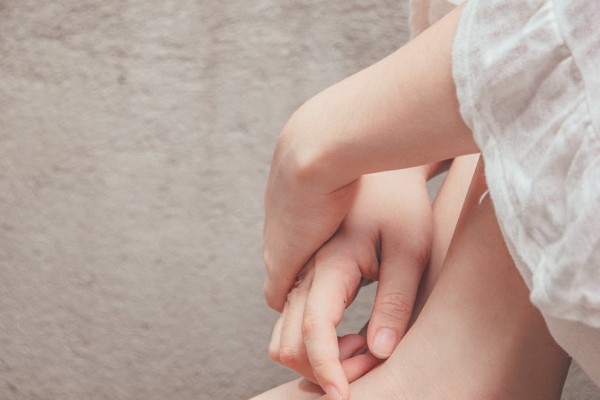About 40% of women will develop dilated blood vessels near the skin’s surface or varicose veins after pregnancy. Hormones and increased blood volume places veins under increased pressure and weakens the one-way valves inside veins. When a valve weakens the blood pools and to compensate the vein dilates and stretches like a balloon to accommodate the increased blood volume. The veins in the legs are most commonly affected because they must work against gravity to ensure blood flows back towards the heart. Leg edema (swelling) and pain affects many pregnant women and can worsen with each pregnancy. For some, their varicosities will improve within 3 to 4 months after giving birth, however, for others, it may not.
Pregnancy Plays a Role in Varicose Vein Development
Pregnancy plays a role in the development of varicose veins in some women, which can cause lower extremity edema (swelling) and pain. Women with varicose veins express experiencing pain, night cramps, numbness and tingling in their legs and feet. Well, ladies, the good news is there are some things you can do to reduce the swelling and alleviate the pain. Also, for some women varicose veins tend to improve after childbirth; typically, within 3 to 4 months. The not so good news—they won’t completely vanish and for some women, may even return with the next pregnancy.

What if Your Varicose Veins Don’t Go Away After Pregnancy?
For some women, varicose veins don’t go away after pregnancy. Typically, within 3 or 4 months following delivery, varicose veins tend to improve, but they won’t completely disappear. Don’t worry ladies; there are several options out there! If you desire to treat your varicose veins after pregnancy, you can; however, you most likely will need to wait at least 3 to 6 months after delivery before beginning any varicose vein treatments. Before starting most medical therapies, physicians and healthcare professionals recommend waiting for your body to normalize after giving birth. This process usually takes about 3 to 6 months depending on the woman. Also, most providers prefer you wait before introducing any treatment until after breastfeeding has completed, as there is a risk of medications entering the mother’s bloodstream and breast milk, possibly affecting the newborn.
Varicose Vein Symptoms Can Worsen After Long Periods of Standing or Sitting
During pregnancy, women are advised to not stand or sit for long periods of time and to take short breaks often, elevating their legs and feet. This recommendation works well for anyone with varicose veins also! The best thing you can do for your overall cardiovascular health, especially your “vein’s,” is to get up and get moving. If you work behind a desk or stand behind a counter for long periods of time, it’s highly recommended to take frequent breaks specifically to stretch your calf muscles and feet to get your blood moving.
Compression Hosiery for Symptom Relief and Prevention
Graduated compression stockings can help relieve swelling and pain of the lower extremities and may even prevent more varicosities from developing. Typically, they are worn during the day and taken off at night and work by applying pressure at the ankles, gradually becoming looser further up the leg(s). This compression helps with the forward movement of blood flow back to the heart. You can imagine, then, how compression stockings can help reduce swelling and alleviate pain, as they assist the body in pushing blood forward, thereby, relieving the legs and feet from increased fluid and pressure.
Consult A Vein Specialist
If your varicose veins don’t improve after giving birth or are causing you discomfort or you merely don’t like the way they look, talk with your physician. There are several options out there, and if your doctor is concerned, he or she will likely refer you to a vein doctor for further evaluation.
Medically reviewed by Dr. Susanne Woloson on 5-01-2020.
*Disclaimer: “We are a participant in the Amazon Services LLC Associates Program, an affiliate advertising program designed to provide a means for us to earn fees by linking to Amazon.com and affiliated sites.”
Read This Next
A Guide to Perforator Veins The venous system of the lower limbs consists primarily of deep and superficial veins but there is a system of veins that connect the two,...
Read MoreAs the weather warms, many of us shed our heavy winter boots and shoes for lighter, airier sandals or sneakers. However, if we are one of those who has swollen ankles and...
Read MoreWhy Are My Arm Veins Bulging? Prominent, bulging veins in your arms and hands aren't usually a sign of a serious health concern. For many patients, however, they are a...
Read MoreHave you recently noticed the development of blue veins on your chest or breasts? If so, you have probably found yourself struggling with a variety of emotions: fear, self-consciousness,...
Read More






